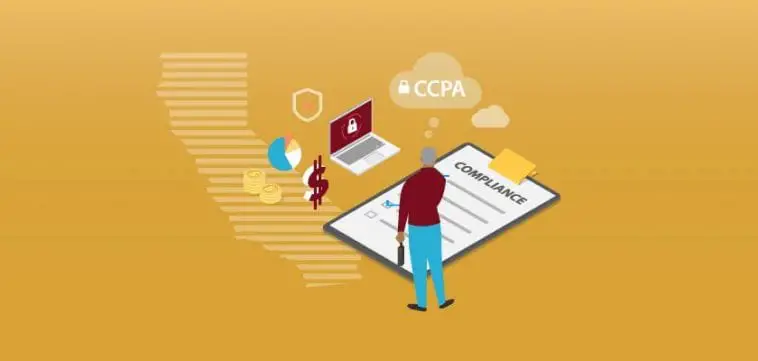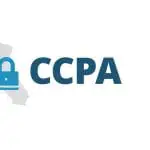As we enter the 22nd Century, the changes and technological advancement is highly noticeable when compared with the technology from ten years ago. With all these changes, almost everything can be done online in just a click away, whether it be the field of education, communication, transportation, business, and such. Technology did their part in improving the lives of the people making it more effective and efficient.
Earlier this year, another Privacy Act was regulated in compliance with transactions requiring online activities. This is the CCPA. This post will help in fully understanding the terms, preparations, applications, exemptions, and keys in complying with CCPA accordingly. As it was early in the year 2020, there really are a lot of factors to take into consideration for businesses run by the internet. Read on and know more about the coverage of CCPA.
What is CCPA?

The CCPA or the California Consumer Privacy Act was initially signed into law back on the 28th of June in 2018. It was only early this year, January 1, 2020, when the law was implemented to take effect. The CCPA is an act granting all consumers of California their rights covering control over their personal information, data privacy, freedom of information, right to data deletion, and the right to remove their personal information from the business. In addition, CCPA also covers additional protection for the minors involved.
This act is actually the first consumer privacy act implemented in the United States of America. As it acts like a GDPR of Europe, no other state within the US implemented such a privacy act involving transparency between the company and the customer. They are required to notify the consumers whenever there is a case of data collection. It will serve as a legal agreement about the collection and protection of personal information.
How to Prepare for the Future of Data Privacy Regulation?

The CCPA took effect last January 1, 2020. Just like GDPR of Europe, CCPA heightens its security standards when it comes to data acquisition and storage in honor of the consumers’ data privacy rights. Given these new and improved regulations for businesses, it is just right to conduct proper preparations prior to implementation. To give further enlightenment, here are five things to remember during the preparation period for the future of the data privacy regulation.
1. Respect Customer Preferences
Privacy Policies are all about consent before collecting data, such as personal information. Respecting customer preferences is the first step in preparation because it is stated within the rights of CCPA that they have the right to choose what happens with the acquired personal data of the customer. They can choose to have it collected, removed, and deleted.
2. Manage User Deletion
User data deletion, in particular storage, is upon the request of the customer. The data undergoes the procedure of deletion from the system wiping off all the records from the server as well as from the connected warehouse. They are required to forward the request to the third-party services and integrations aligned to the transaction or online activity.
3. Compile the Users’ Data
The data acquired from the customers are directed to Segment and is directed to raw data integrations, personas, and warehouses. This helps in effectively exporting and analyzing the information acquired from a customer. When the customer’s preference is to have the data deleted, modified, disclosed and stopped the data collection, some use particular storage for back-up.
4. Treat Privacy as a Right
Regardless if it has already been implemented as a law or not, it is the developer’s liability to take full responsibility to protect their data and deliver good data practices. This helps in providing trustworthy and relevant experiences to the customers, too, in which respect the customer’s preference on what to do with the data. It would be best to invest in a high-standard security program that will further help in managing and auditing personal data.
5. Check Terms & Conditions, Privacy Policies, and Disclosures
Stated in the CCPA, the businesses are required to inform and be transparent with the customers in cases that they have to share, sell, and disclose personal information. The customers have an option to opt-out and opt-in and consumers of minor age, which is below 16 years old. The businesses are required to collect, document, and report the consent of their customers, minimizing the risks of having an unsettlement. This process should be clearly stated in the Terms & Conditions, End User License Agreements, and Privacy Policies.
What are the Three Keys to CCPA Compliance?
In order to further assist businesses in terms of compliance and maintenance CCPA, here are three key components that will help. Since CCPA discusses the majority of the consumer’s privacy rights, it is just right to have a brief explanation of what are the grounds to cover in complying with their rules and regulations.
Key #1: PREPARE
The first step to CCPA compliance is the preparation stage. It’s not different from the other privacy acts present such as Europe’s GDPR. It is highly advisable to read the whole act, its coverage, as well as its limitations. Identify the data that needs to be collected on your website or business and assess the classification they belong to. Identify whether the data to be collected requires the consent of access. Furthermore, study the procedure of CCPA. Weigh in what is the data that is most likely to be needed for the business yet puts it at high risk of encountering breach.
Key #2: IMPLEMENT
The second key is to implement. Right after assessing the permissions and personal data, secure it with suitable permissions that promote highly effective security measures. They take care of data access limitations. In addition, it would be best to implement a program that will aid in monitoring and accessing the personal data from risks of unauthorized access. Do not forget to continuously maintain the privacy and security of personal data through reviewing the data as well as the permissions it is associated with.
Key #3: MAINTAIN
Be wary of the risks of online transactions. Always check and adjust security and privacy accordingly. Do not forget to review the CCPA every now and then for other additional updates. Maintaining the security of personal data and permissions is the third step. Look out for possible cyber threats that will not just permit illegal access but as well as have the data stolen and damaged.
Conclusion
In conclusion, as the rise of technology develops, the risks rise alongside as well. Engaging in online transactions relating to macro businesses indeed is a big risk not just to the business but as well as to the consumers involved. Always think of the welfare of the consumers. It’s not just about the business but the security of the consumer’s personal information. Yes, it is a big investment with all the requirements, but damage control is a way bigger picture to deal with in the long run.



